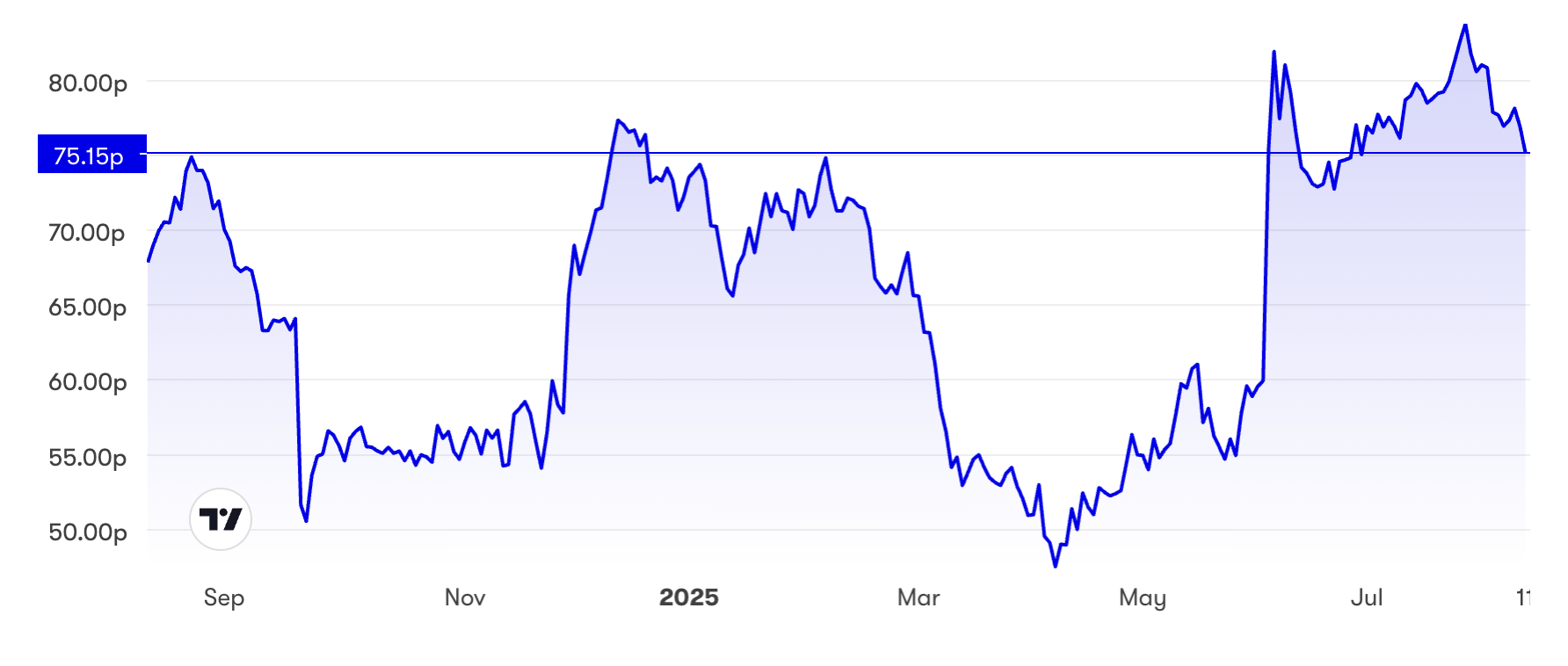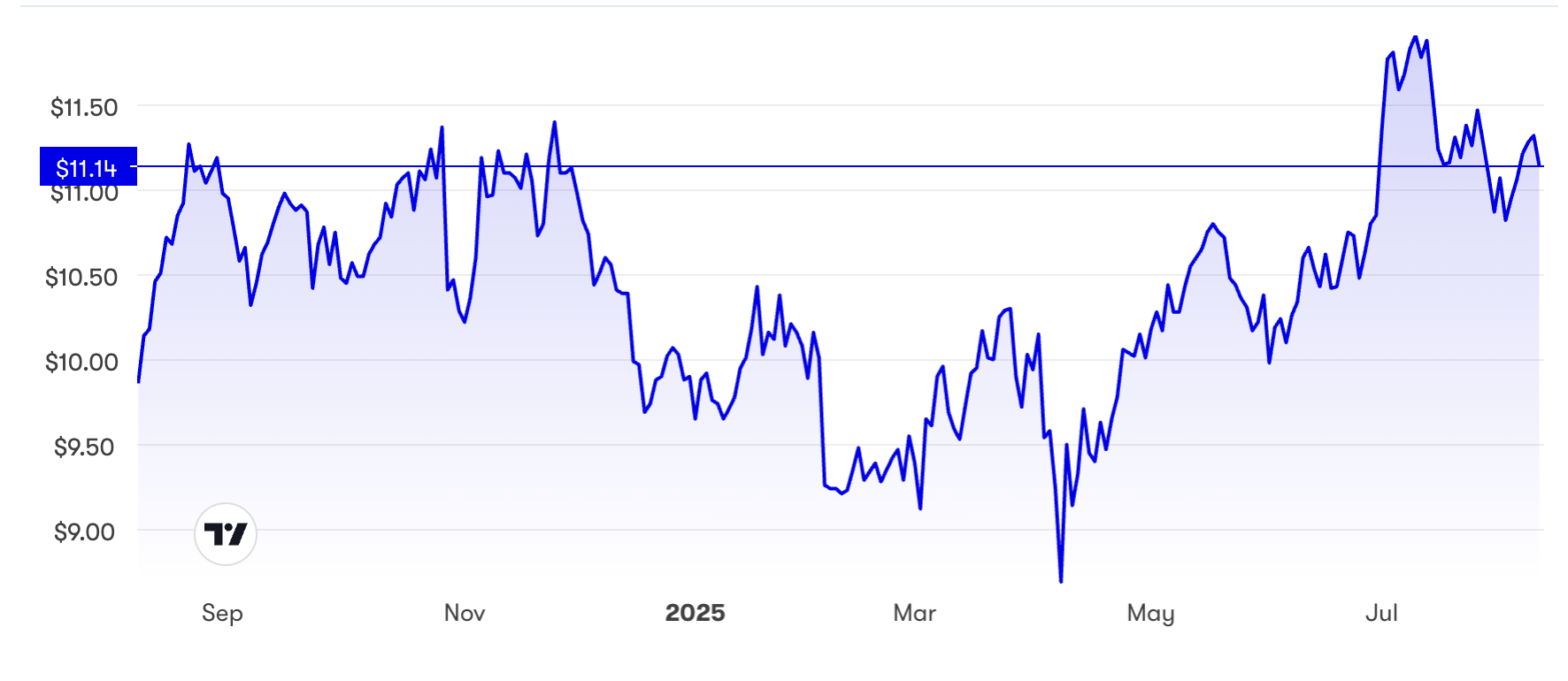Stockwatch: can UK shares remain strong given US tariff impact?
Amid global uncertainty, analyst Edmond Jackson examines the challenges for a handful of well-known companies, finding a sweet spot in the UK market.
12th August 2025 11:45
by Edmond Jackson from interactive investor

The realities of US tariff policy are now clear despite a strong rally in risk assets since the second week of April. Can equities remain at all-time highs or will they bake in an inflection point, and soon? Or, is there some special ingredient behind the rise?
US price/earnings (PE) multiples are at the highest level since the dotcom bubble of 2000; and even if adjusting for a near-oligopoly of big tech companies dominating the US stock market, I find ratings on major cyclical and indebted companies rich versus the UK.
- Invest with ii: Buy International Shares | Most-traded US Stocks | Top UK Shares
Bond markets are taking a far more cautious view of the average US tariff rate, now around 18% and the highest since 1934. When equities took off after President Donald Trump’s unveiling of “reciprocal tariffs” in early April, it was in a confident sense that tariffs were a negotiating ploy to be dialled back from around 20%.
An interesting study from Yale University’s The Budget Lab, a policy research centre, cites the overall 2025 tariffs’ hit as $2,400 (£1,786) on average per US household.
Commodity price rises appear to disproportionately affect clothing and textiles, with 39% higher shoe prices and 37% higher apparel prices in the near term, settling up 19% and 18% respectively.
Real US gross domestic product (GDP) is likely to be 0.5% lower in 2025 and 2026, settling 0.4% softer in the long run. This marginal-sounding effect is because imports constitute only 14% of the US economy; although the cost amounts to around $125 billion annually, longer term.
The upshot for shoes looks like a medium to longer-term challenge for Dr. Martens Ordinary Shares (LSE:DOCS), whose shares have had fits and spurts this year as investors attempt to price in the potential of a new CEO, who took charge in January.

Source: interactive investor. Past performance is not a guide to future performance.
The US represents about 37% of group revenue and June’s prelims to 30 March said about tariffs that “the majority of autumn/winter 2025 stock will either be in the market or [in] transit. We generate strong product gross margins, which is helpful given that tariffs are charged on cost, not retail price.” In the short to medium term, “we will be keeping average prices unchanged in the market”.
Given the skewed impact of tariffs on footwear, Dr Martens is an outstanding example of how UK multinationals are being affected and must react. The CEO’s words to date beg questions as to how US margins will fare if such tariffs are sustained, hence the share’s volatility may persist.
Of only modest use in managing $37 trillion in US public debt
In terms of fiscal effect, The Budget Lab estimates that US tariffs to date in 2025 will raise $2.2 trillion over 2026-35 on a net basis adjusting for adverse effects. This compares with US public debt of around $37 trillion, hence of modest use to mitigate.
President Trump’s One Big Beautiful Bill Act could modestly boost GDP for a while but will radically increase the debt-to-GDP ratio. Meanwhile, the non-partisan Congressional Budget Office estimates that the 10% of poorest Americans will lose around $1,200 a year due to tighter Medicaid and food assistance. While American households will overall see more income from tax cuts, the top 10% of earners benefit most.
The macro effects of all this look to be medium to long-term economically constraining given that less well-off people spend more on essentials. Supportively for shares perhaps, those who are more affluent will have further excess cash for investment products.
Higher prices for US consumers, also US industry input costs, creates a further dilemma for the Federal Reserve on inflation and interest rates. Yet one Fed governor said last Saturday that there should be three rate cuts this year given concerns about the strength of the jobs market and overall US economy. GDP rose 1.1% in the first half of 2025 versus 2.2% in the second half of 2024.
Since equities are very much attuned to monetary policy, such teases certainly help.
Is growth in US money supply the real reason for bullishness?
A cynical view of stock markets [sees] money supply as far more important than corporate earnings or the economic outlook.
It seems corroborated by rapid growth this year in the US “M2” broad measure, which is up 4.5% year-on-year as of last June compared with 4.2% in May and 1.4% a year ago. This constitutes cash and easy-access money accounts (M1) plus savings accounts, money market funds and certificates of deposit.
When M2 rises, so therefore does the chance of cash finding its way into investment products in search of return. Often this follows government stimulus or quantitative easing measures, which would seem odd, and hard to decipher lately. The Fed’s current moderately restrictive stance has responded to post-Covid inflation due to supply shortages and an overhang of stimulus.
Money supply is thus likely driving equity prices, even if it frustrating to try and grasp what’s behind it in order to judge sustainability.
Adverse effects on US agriculture, electronics and auto industries
Yale’s The Budget Lab report cites crops facing a 31.5% price hike, settling to 15.1% in the longer run, and “computer, electronic and optical” up 17.0%, settling at 7.7%. However, that would seem to let off key areas of artificial intelligence (AI) given that it is a service rather than product industry.
Since the 10 biggest companies in the S&P 500 are growing much faster than the rest, they are unlikely to be checked by tariffs. Their upshots really are mixed, and it will take time to decipher the overall effect, but it still looks negative.
Motor vehicles and parts are to be hit 12.4%, settling to 9.4% higher prices longer term. Ford Motor Co (NYSE:F) has already said it paid $800 million related to tariffs in the second quarter alone and General Motors Co (NYSE:GM) a remarkable $1.1 billion, but it has yet to raise its prices.
Even so, Ford’s chart shows a bull market from April. What is the mix of M2, plus irrational exuberance?

Source: interactive investor. Past performance is not a guide to future performance.
What of Europe/US trade and its contribution to global growth?
The sight of European Commission President Ursula von der Leyen and Prime Minister Keir Starmer paying homage to President Trump at his Turnberry seat of power in Scotland raises weird historic parallels.
We now have an “Orange King” pursuing absolutism quite like the “Sun King” Louis XIV of France from 1643 to 1715. The European Union and UK submitting to a form of “Danegeld” like Ethelred the Unready paid Danish raiders from AD 991.
Rudyard Kipling’s poem Dane-geld, which concluded how the end-game for such nations is oppression and shame, remains apposite today.
- Global small caps: what’s behind the post ‘Liberation Day’ surge?
- Stockwatch: does share’s big discount and 9% yield outweigh risks?
The EU has agreed an effectively punitive 15% US tariff on all its goods with no “reciprocal” arrangement; it is to purchase $750 billion of US energy versus around $100 billion currently; and make a $600 billion direct investment in the US. If this is not achieved by 2028, then the US has the right to further raise the tariff. Effectively, this is a tribute tax in return for peace.
France’s European affairs minister says the agreement should bring temporary stability although it is “unbalanced”.
While there seems plenty of upside for the US – and this needs recognising since it bringsfurther complexity to the overall effect of tariffs – it is unclear what the EU gains apart from a reduction in uncertainty perhaps.
Ireland is the EU country most reliant on the US for exporting and its prime minister says the deal will make trade “more expensive and more challenging”.
With the euro having rallied 20% from its near-parity low versus the dollar early last February, this together with the 15% tariff makes European goods 35% less competitive in the US.
The up – or potential down – shot for global macro is that the EU is the US’s second-largest trading partner in goods and together they represent 30% of global trade in goods and services and 43% of global GDP.
UK takeovers remain a sweet spot amid global uncertainty
While “global macro” looks worrying alongside US equities propped up by fleeting money supply, consider this. Despite the UK economy supposedly being shot by Brexit, rising taxes and a work-shy population defaulting to sick notes, takeovers of UK-listed companies well above share prices continue.
Canadians are buying retirement specialist Just Group (LSE:JUST) at a circa 65% premium, while Germans are buying the building products group Epwin Group (LSE:EPWN) at a circa 30% premium.
Yes, there is a “premium for control” but such an extent – with take-out values still low in a historic context – offers comfort for UK shareholders in an increasingly difficult investment world.
Edmond Jackson is a freelance contributor and not a direct employee of interactive investor.
These articles are provided for information purposes only. Occasionally, an opinion about whether to buy or sell a specific investment may be provided by third parties. The content is not intended to be a personal recommendation to buy or sell any financial instrument or product, or to adopt any investment strategy as it is not provided based on an assessment of your investing knowledge and experience, your financial situation or your investment objectives. The value of your investments, and the income derived from them, may go down as well as up. You may not get back all the money that you invest. The investments referred to in this article may not be suitable for all investors, and if in doubt, an investor should seek advice from a qualified investment adviser.
Full performance can be found on the company or index summary page on the interactive investor website. Simply click on the company's or index name highlighted in the article.
Disclosure
We use a combination of fundamental and technical analysis in forming our view as to the valuation and prospects of an investment. Where relevant we have set out those particular matters we think are important in the above article, but further detail can be found here.
Please note that our article on this investment should not be considered to be a regular publication.
Details of all recommendations issued by ii during the previous 12-month period can be found here.
ii adheres to a strict code of conduct. Contributors may hold shares or have other interests in companies included in these portfolios, which could create a conflict of interests. Contributors intending to write about any financial instruments in which they have an interest are required to disclose such interest to ii and in the article itself. ii will at all times consider whether such interest impairs the objectivity of the recommendation.
In addition, individuals involved in the production of investment articles are subject to a personal account dealing restriction, which prevents them from placing a transaction in the specified instrument(s) for a period before and for five working days after such publication. This is to avoid personal interests conflicting with the interests of the recipients of those investment articles.